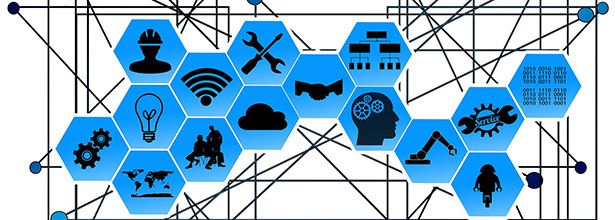The Covid-19 pandemic has put the nature of global supply chains into sharp relief: how free and open movement of goods and services is a fine principle but one that’s loaded with risk, and that risk is accentuated at every stage when there is reliance on people. Shorter, simpler supply chains, with resilience as the priority, have become an imperative.
That means new models structured around near shoring and smaller, localised operations, and the flexibility and adaptability in strategy-making and management to deliver, and keep on being able to work from positions of less certainty. An underpinning of Industry / Supply Chain 4.0 mechanisms - automation, autonomous systems, Artificial Intelligence, for example - is needed to provide a foundation level for operations that can more easily deliver a ‘business as usual’, a functionality for commerce and economies as a whole that’s independent of constant - and inevitably less reliable - human agency.
As always in business, there are winners and losers in any changing set of circumstances. In this case the lines of demarcation are being drawn around those enterprises that deliver necessities and the rest who offer ‘luxuries’. The lockdown period has meant a return to populations focusing on the base areas of the Maslow hierarchy of needs: food, housing, healthcare products (to which, in the 21st century, has been added our need for WiFi and digital connectivity).
There’s the likelihood that in the post-COVID-19 period, at least initially, consumers will be constrained psychologically to these areas. Having become used to home delivery, associating them with convenience and safety, it may well be that these models persist and become a larger, more established part of consumer expectations and behaviours, with the associated cost implications for business (with so many home delivery services being provided free or at an uneconomically viable low cost). Again, that means further impetus for automated alternatives to people in stores and warehouses employed for picking and packing.
Most of all, the medium-term priority for businesses across sectors will be adaptability. Companies that understand their capabilities and are able to be flexible, will survive in the best shape. We’ve already seen Louis Vuitton and Brewdog switch operations to hand sanitiser products: because they have the basic capability to put liquids into bottles. Automotive firms are making respirators.
Businesses need to be planning and preparing for operations in this post-Covid-19 context now:
- Understand your organisation’s key capabilities. Reflect on what your organisation does and how this capability could be utilised in other markets less affected by the pandemic.
- Map the full extent of your supply chain, all of the flows of raw materials, all of the geographical location of key suppliers and the transport flows connecting them. Build stronger relationships with suppliers in order for there to be complete transparency (a critical quality in the post-Covid-19 world). Make sure you understand where your own products go after manufacture.
- Start to assess what elements of your supply chain have the potential to be automated - even if it’s not immediate but a long-term goal. What are the steps in-between - like collaborative robotics - that will help achieve that future goal.
- Investigate opportunities for near shoring. Is there a capability to procure in your local area or could it be developed? Look at the potential for collaborative competition (or “coopetition”) as a means of building more local supply chain.
- Be realistic about the cost implications of home delivery models: do you know the true cost of delivery (Cost to Serve) to individual customers for particular product types? Do you understand the cost of returns? There is no such thing as free delivery or free returns, someone will be paying, and it could be you.
Author
Richard Wilding OBE, Professor of Supply Chain Strategy and Programme Director of the Supply Chain Management Programme, Cranfield School of Management.



